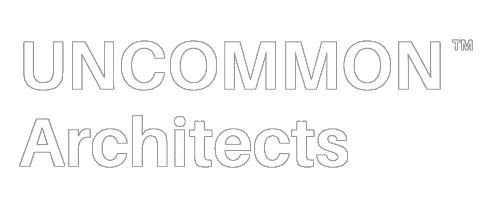Definition:
User-Generated Content (UGC) refers to any type of content, such as images, videos, reviews, or social media posts, created by users or customers rather than the brand itself. In the realm of architectural marketing, UGC plays a crucial role in building credibility, engaging with the audience, and showcasing real-life experiences and feedback.
Detailed Description
User-Generated Content is a valuable asset for architectural firms as it allows them to leverage the power of social proof and authenticity. By encouraging users to create and share content related to their experiences with a firm or its projects, architects can establish trust, foster community engagement, and generate organic interest in their services.
Applications in Architecture
In the architectural context, User-Generated Content can take various forms, including project photos shared by clients, testimonials on social media, or reviews on dedicated platforms. By showcasing real-life interactions and experiences, firms can enhance their online presence, attract potential clients, and differentiate themselves in a competitive market.
Uses:
Architectural firms can utilize User-Generated Content to showcase their work in a more authentic and relatable manner, fostering trust and credibility among prospective clients. By encouraging user participation and sharing, architects can tap into the power of social influence and word-of-mouth marketing.
Examples:
For instance, a firm could feature user-submitted photos of completed projects on their website or social media channels, accompanied by testimonials from satisfied clients. By sharing these authentic experiences, the firm can highlight their expertise, build brand loyalty, and attract new clients seeking similar services.
Implementation
Procedure:
To effectively leverage User-Generated Content in architectural marketing, firms should start by creating a clear strategy for encouraging and collecting user submissions. This may involve setting up dedicated hashtags, running contests, or simply encouraging clients to share their experiences online.
Steps:
1. Define a clear strategy for user participation and content submission.
2. Implement tools and incentives to encourage users to share their experiences.
3. Engage with users who submit content, thanking them and showcasing their contributions.
4. Monitor and moderate user-generated content to ensure quality and relevance.
5. Use UGC across marketing channels to amplify its impact and reach a wider audience.
Considerations
User-Generated Content should be authentic, relevant, and aligned with the firm’s brand values and messaging. By actively engaging with users and showcasing their content, architects can create a sense of community and trust that resonates with potential clients.
Expected Outcomes
When implemented effectively, User-Generated Content can help architectural firms increase brand awareness, foster client engagement, and establish a strong online presence. By showcasing real-life experiences and testimonials, firms can build credibility, trust, and loyalty among their target audience.
Outcomes:
The use of User-Generated Content can lead to increased social proof, enhanced brand authenticity, and improved client engagement for architectural firms. By tapping into the power of user stories and testimonials, firms can differentiate themselves in a crowded market and attract clients seeking trustworthy and relatable services.
Impact:
The short-term impact of integrating User-Generated Content into marketing strategies may include increased social media engagement, improved brand perception, and enhanced client relationships. In the long term, firms can expect to see a growth in brand loyalty, client referrals, and overall market visibility.
Maintenance and Monitoring
Regularly monitoring and maintaining User-Generated Content is essential to ensure its relevance and effectiveness in architectural marketing efforts. By tracking user submissions, engaging with contributors, and showcasing the content strategically, firms can maximize the impact of UGC on their branding and client relationships.
Best Practices:
To maintain the effectiveness of User-Generated Content, firms should regularly monitor submissions, respond to user interactions, and update their content strategy based on feedback and engagement metrics. By staying proactive and attentive, architects can ensure that UGC continues to drive positive outcomes for their marketing efforts.
Strategies:
Developing a comprehensive monitoring and maintenance plan for User-Generated Content can involve setting up automated tools for content moderation, engaging with users through comments and messages, and analyzing the performance of UGC across different channels. By implementing these strategies, firms can sustain the impact of UGC and drive ongoing success in their marketing campaigns.
Are you ready to transform your studio?
FAQs
What are the benefits of incorporating user-generated content in architecture firms?
User-generated content can provide authentic testimonials, showcase projects from a different perspective, and engage with potential clients on a more personal level.
How can architecture firms encourage users to submit content?
Architecture firms can offer incentives, create interactive platforms, and actively engage with users on social media to encourage content submission.
Is user-generated content beneficial for SEO in architecture firms?
Yes, user-generated content can improve SEO by providing fresh, relevant content, increasing website traffic, and attracting backlinks.
What are some examples of successful user-generated content campaigns in architecture firms?
Campaigns that involve photo contests, design challenges, and client testimonials have been successful in generating user-generated content for architecture firms.
How can architecture firms ensure the quality of user-generated content?
By setting clear guidelines, moderating submissions, and providing feedback, architecture firms can maintain the quality of user-generated content on their platforms.
What role does user-generated content play in building brand trust for architecture firms?
User-generated content can help build brand trust by showcasing real experiences, demonstrating expertise, and fostering a sense of community among clients and followers.
Can user-generated content help architecture firms attract new talent?
Yes, user-generated content that highlights the firm’s culture, projects, and employee testimonials can attract new talent by showcasing the company’s values and work environment.
What are the potential risks of incorporating user-generated content in architecture firms?
Risks include negative feedback, copyright infringement, and inappropriate content that may damage the firm’s reputation if not properly managed or monitored.
How can architecture firms measure the impact of user-generated content on their business goals?
By tracking metrics such as engagement rates, website traffic, lead generation, and customer feedback, architecture firms can measure the impact of user-generated content on their business goals.

